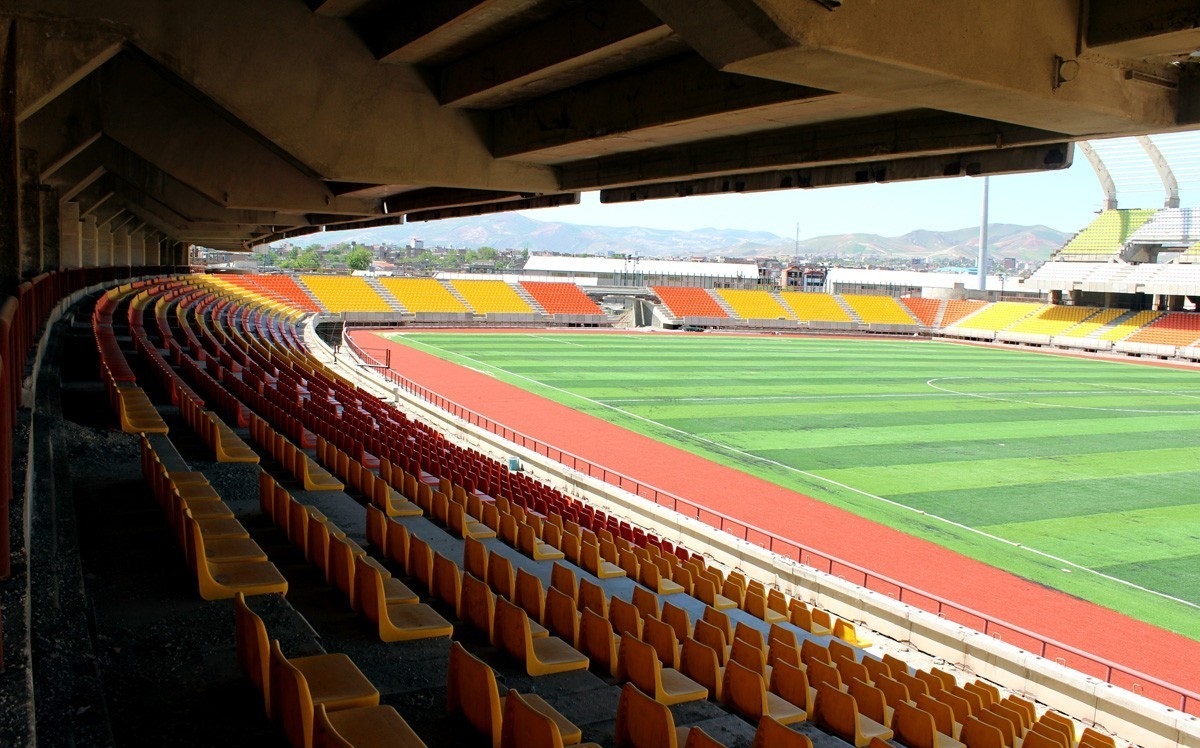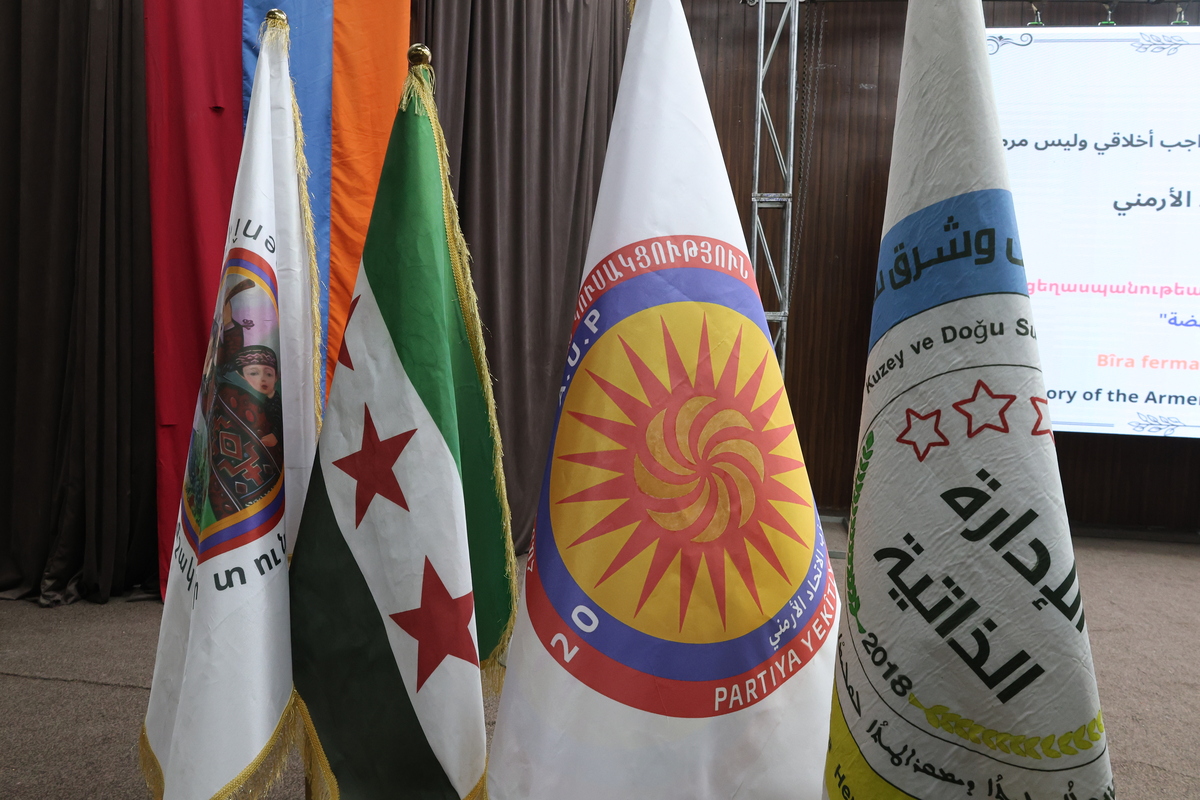Football, Ethnic Tensions in Urmia, and the Government’s Silence
A football game at the Shahid Bakeri stadium in Urmia, in the northwest of Iran, turned into ethnically-charged clashes this month.
On 9 October 2025, Kurdish fans of the Hoor Spor football team reportedly cheered their team on with chants like “Long live Urmia” and “Hoor for Urmia, Urmia for Hoor.”
On 12 October 2025, during the match between the teams Navad Urmia and Nasaji Mazandaran, several Azeri (Azari) Turkish fans of the former allegedly chanted hate speech. The chants included “Kurds are immigrants” and “Where are you, Hassani? Come hang the Kurds.” Ghomalreza Hassani, an Iranian Azeri cleric, was the Supreme Leader’s Representative in West Azarbaijan and the Friday Prayer Imam of Urmia. He formerly led the Revolutionary Committees in this province, known for his hostility and violence against the Kurdish people. They reportedly also raised the sign of the pan-Turkist, far-right Grey Wolves, a state-linked paramilitary group responsible for numerous massacres of Kurdish civilians in Turkey.
These incidents challenged the “multi-ethnic coexistence ethos’’ of the city,highlighting ethnic divisions.
Footage of these incidents has gone viral on social media. Iranian officials have remained unresponsive. Experts and activists are worried that this silence shows the government’s double standard regarding ethnic tensions.
In conversations with The Amargi, experts, local activists, and journalists unpack the reasons for why the stadium turned into a site of ethnic conflicts, the consequences of the government’s silence, and solutions for rebuilding social trust.
Sport and the Crisis of Identity
Urmia, historically home to Kurds, Azeris, Armenians, and Assyrians, has for years been a symbol of peaceful coexistence. Now, sport, an activity associated with joy and solidarity, has instead become a place of identity conflicts.
Xalo Urmia, a political activist, told The Amargi: “Urmia Stadium is more than a football pitch; it’s a mirror of a multi-national society with historical wounds that haven’t yet healed. When there is no cultural strategy for solidarity, football becomes a stage for protest and identity presentation.”
Journalist Rasul Galeban points out, “Sports arenas, such as those for volleyball matches, have become platforms for hatred and for promoting Turkish-speaking candidates, creating atmospheres hostile to Kurds and Persians.” He adds: “Sports in Urmia have long been politicized.’’
Bahram Rahmani, a leftist political activist and journalist, believes that these events belong to a strategy employed by the Iranian government, pointing to the 2 September 1979 massacre in Qarna and Qalatan in Naghadeh led by Gholamreza Hassani, at the time Ayatollah Khomeini’s representative in Urmia: “It was the state’s starting point to split Kurdish and Turkish people who lived together for centuries. Its aim was to prevent solidarity between these people in a region that is known to challenge central power in Iran. They are terrified of unity between Kurds and Turks”.
The Tractor team is used as a tool for this policy. For example, during one match, a hateful chant was heard: ‘Death to Kurds and Armenians’.
“Tabriz’s Tractor Sazi football team was taken over by the Islamic Revolutionary Guard Corps (IRGC). It tasked its agents in this team, disguised as fans, to sow discord. The Tractor team is used as a tool for this policy. For example, during one match, a hateful chant was heard: ‘Death to Kurds and Armenians’. During another game in Tehran’s Azadi Stadium, some people chanted: ‘Death to Persians’. This happens at nearly all Tractor team matches. Yet, no one is ever questioned or held accountable for it. It means they have not yet faced any consequences.”
Also speaking to The Amargi, Aydin Tamadon, a lawyer and activist, states that “systematic exclusion of Kurds and government tolerance of hate crimes activated fascism among some Turks.’’ He believes that the racist expressions voiced in stadiums do not reflect the communities’ democratic aspirations.
He refers to the structural nature of the issue: “The state, civil, military, and security posts are mostly held by Azeris in the province and in the city of Urmia. It raises the suspicion that Pan-Turkism here may be backed by the Iranian state.” Qarna
The Government’s Silence as Complicity
“Inactivity against hatred basically means tolerating it. This silence reinforces the feeling of not belonging among ethnic groups, as if the country belongs only to the majority.”
The administrative institutions’ silence on the racist chants has raised serious questions about the government’s neutrality.
Xalo Urmia voiced his concerns as such: “Inactivity against hatred basically means tolerating it. This silence reinforces the feeling of not belonging among ethnic groups, as if the country belongs only to the majority.”
Similarly, Rasul Galeban pointed out the lack of decisive action in Tabriz, where racist chants were accompanied by the raising of Turkish and Azerbaijani flags by Tractor’s supporters. He adds: “Urmia’s sports arenas have been a platform for hatred against Kurds for years, and officials have never taken action.”
Bahram Rahmani agrees with the grave consequences of this impunity: “The provincial, security, and judicial authorities have not reacted to the incidents. This silence raises the suspicion that they approve of such attacks on communities.” He further warned that Pan-Turkist and Kurdish groups use social media to stir up conflict, which “plays right into the hands of the Islamic Republic.”
Rozhyar Urmia, a political activist, highlights the broader unfair administrative structure in the region, organized along ethnic lines: “In most departments and organizations, Azeri personnel from other cities are employed; this discrimination is unbearable.” In her view, the issue in Urmia is more than just sport; it is a crisis of governance in multi-ethnic regions.
This is not the first time administrative bodies have remained neutral regarding racially-charged behaviors of groups in Urmia.
Aydin Tamadon points to the Human Rights Commission of the Tabriz Bar Association, which is acting in a manner that contradicts their founding philosophy by becoming a platform for hate speech, “potentially setting the stage for future catastrophes.’’ The group had issued a later removed statement, endorsing the idea of displacing the Kurds in western Azerbaijan. The lawyer sees the situation as a result of “internal colonialism hidden under the guise of national order”: “Without structural reform, Urmia remains vulnerable to uncontrolled explosions.”
In addition to these incidents, Kurdish people regularly receive threats by high-level Urmia officials. Some of these took to the streets as pro-government thugs, chanting menacing slogans after the 2025 Newroz (New Year) celebrations. This showed that certain people in local power actively fuel the ethnic tensions.
Meanwhile, security forces have arrested peace activist Shayan Houshyar, an Azeri researcher, after publishing a critical note about the hate speech incidents at the stadium.
Reflecting on the situation, Maryam, a teacher in Urmia, says: “This double-standard behavior has worsened the sense of exclusion and mistrust toward the government, weakening social cohesion.’’
Dialogue and Solutions
Xalo Urmia stressed the need for a new cultural policy: “If the government acknowledged the existence of differences across sectors like education, media, and sport, the stadium would turn into a field of friendship. Multi-lingual education and media are the only path to coexistence.”
Maryam also emphasized the need for “mutual recognition of identities”. She underscores inter-ethnic dialogue through cultural programs, joint competitions, and the role of local figures.
“If policymakers do not accept that Iran is a country with diverse nations, they must prepare themselves for the collapse of cohesion.”
The recent tensions are a warning sign about the collapse of social trust. The local power structure lacks the necessary neutrality, and the government’s silence has seemingly legitimized the spread of hatred.
Bahram Rahmani believes that the government policies are a fearful response to the historic solidarity between Kurds and Azeris during the Woman, Life, Freedom uprising in 2022. He suggests that people must act in “awareness and solidarity”, “moving toward democratic self-governance” instead of falling for the Iranian state’s divisive policies.
Xalo Urmia concludes: “If policymakers do not accept that Iran is a country with diverse nations, they must prepare themselves for the collapse of cohesion.”
“Kurds and Azeris in Urmia are bound to peaceful coexistence.”, believes Rasul Galeban. This can only be achieved through “mutual dialogue” for “mutual recognition” and creating “a genuinely shared space”.
Rebuilding trust in Urmia requires the political will of the central government to abandon divisive policies. This must take Participatory and multicultural governance into consideration. Without structural reforms, the football pitch in Urmia could remain a crisis zone.
* Some interviewees’ names have been changed to protect their identities.
Kawe Fatehi
Kawe Fatehi is a journalist and translator, based in Berlin, with a Master's degree in English Literature and Language. He has written for multiple Kurdish and Persian media outlets, covering topics related to the Kurdish community in Iran, Iraq, Turkey, and Syria. In addition to his journalism work, he is a social worker.




